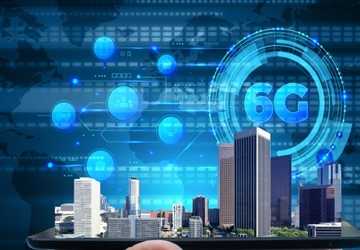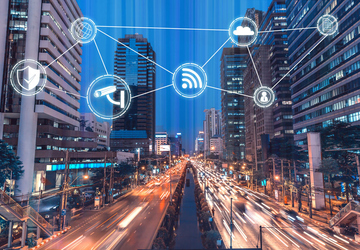Smart cities are all the rage nowadays, but what does it mean? Well, it's about making our cities better, more efficient, and more livable using technology. Think of it as giving our urban areas a digital makeover. In this article, we're going to explore three of the best smart city initiatives that are using tech to make our lives easier and our cities more sustainable. There is no need for complicated jargon here, just plain and simple explanations.
Smart Traffic Management
Let's face it – sitting in traffic is no fun. It's frustrating, time-consuming, and just plain stressful. However, smart cities aim to change that with innovative traffic management systems. Imagine a city where traffic lights change in real-time based on the flow of vehicles, reducing congestion and cutting down on those annoying traffic jams. Well, it's happening in many smart cities already. These systems use sensors and cameras to monitor traffic conditions, analyze the data, and adjust traffic signals accordingly.
The city of Copenhagen, Denmark, is a prime example of this tech-driven traffic management. They use a system that collects data from sensors embedded in the roads and traffic lights. This data is then used to optimize the timing of signals to keep traffic flowing smoothly. But the magic doesn't stop there. Some smart cities are taking it up by implementing intelligent parking systems. These systems use sensors to guide drivers to available parking spots, saving time and fuel. No more endless circling in search of a parking spot – a small but incredibly convenient change.
The best part is that these initiatives aren't just good for our sanity; they also help reduce air pollution and fuel consumption. It's a win-win for everyone.
Waste Management Revolution

Nobody likes the smell of overflowing garbage bins or trash on the streets. That's where smart waste management systems come into play. These systems use technology to make waste collection and disposal more efficient. In some smart cities, garbage bins have sensors that monitor their fill levels. When a bin is nearly full, the system sends an alert to waste collection teams, telling them it's time for a pickup. This means no more unnecessary trips for garbage trucks, saving time and fuel.
Barcelona, Spain, is a great example of a city that has embraced this smart initiative. They've placed sensors in thousands of bins nationwide to monitor their fill levels. This has led to a 30% reduction in waste collection costs and a cleaner city. Less money spent and cleaner streets – that's a double win! But the tech doesn't stop at waste collection. Some cities are also using data analytics to optimize waste collection routes. This means garbage trucks take the most efficient paths, reducing fuel consumption and emissions. It's a simple idea that has a big impact.
Energy-Saving Street Lighting
Traditional street lighting systems can be energy guzzlers, but smart cities use energy-efficient lighting solutions. LED lighting, for instance, is becoming a standard in many smart cities. LED lights consume significantly less energy compared to traditional streetlights. They also last longer, which means fewer maintenance costs. That's a real money-saver for cities, and it's eco-friendly too.
Moreover, some smart cities go the extra mile by incorporating sensors into their streetlights. These sensors can adjust the brightness of the lights based on the amount of natural light available, which helps save even more energy. San Diego, California, has led the way in this energy-saving initiative. They've replaced over 35,000 streetlights with energy-efficient LED lights and added sensors to control their brightness. This simple switch has led to an impressive 60% reduction in energy costs. And the streets are well-lit without unnecessary waste – a win for the city's budget and the environment.
Smart Public Transportation
Getting around in a city can be a real hassle, especially during peak hours. But smart cities are tackling this issue by revolutionizing public transportation. Imagine having an app on your phone that not only shows you the bus or train schedules but also provides real-time updates on their locations. This is a reality in many smart cities. They have integrated GPS and mobile technology into their public transportation systems, making it easier for commuters to plan their routes and avoid unnecessary waiting.
For example, in Singapore, they've introduced the "Beeline" app, which allows commuters to book on-demand bus services based on their specific needs. No more waiting at bus stops in the sweltering heat or pouring rain. With a few taps on your phone, you can book a bus that comes to you, optimizing routes for convenience and efficiency.
Additionally, some cities are exploring electric and autonomous buses, reducing emissions, and making public transportation eco-friendlier. These buses have sensors and cameras for safety and better route optimization. In the end, smart public transportation not only makes getting around the city more convenient but also contributes to reduce traffic congestion and air pollution, making cities more pleasant and sustainable places to live.
Conclusion

Smart cities are about making our urban lives more convenient, efficient, and sustainable. It's not about high-tech jargon; it's about practical, everyday changes that make our cities better places to live. From smart traffic management to waste collection and energy-efficient lighting, these three tech-driven initiatives are just the beginning of the smart city revolution.
So, the next time you find yourself in a city that seems a bit more organized, with less traffic, cleaner streets, and energy-saving streetlights, you'll know that technology is at work to make your life better. Smart cities are all about the small, meaningful changes that make a big difference. It's about time our cities got a digital makeover, and it's happening, one sensor and one LED light at a time.















